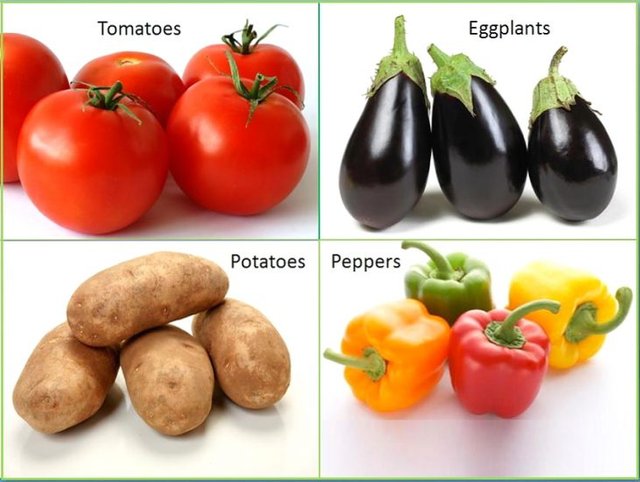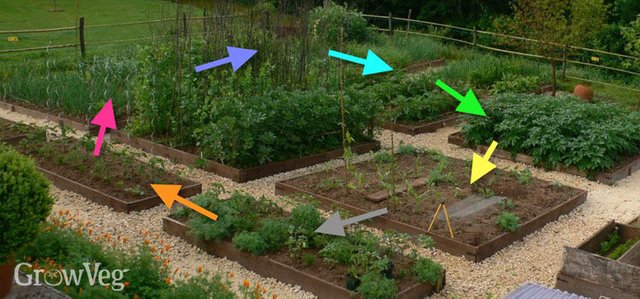crop rotation in agriculture and methods
Product turn is a principal natural planting practice that has been demonstrated compelling for upsetting nuisances and ailments in the vegetable garden. It's not troublesome but rather it takes a tad of arranging. Fortunately a large number of us are monitoring our plants and where they're planted at any rate, in which case, it's no additional push to try it out.
There are two or three harvest revolution strategies and plant specialists and ranchers who utilize them have their undisputed top choice. The principal path is to plant crops as per singular vegetable families and is by all accounts the most widely recognized turn system. The second depends on the wholesome needs of these plants, which is turning for soil ripeness.
Pivoting plant families is tied in with changing the beds that harvests are developed in from season to season; as a rule on a 4-year cycle. Turning crops season after season is a sound natural planting practice for a few reasons. To start with, this procedure jelly organic decent variety, which can keep the development of ailments in the dirt, and irritations that assault particular harvests. Second, edit pivot can keep the overwhelming feeders from draining the dirt of supplements and now and again, really enhancing soil fruitfulness.
Every vegetable plant falls into a more distant family and these families share particular adversaries (the two nuisances and infection). For example, parasitic infections, for example, curse assault potatoes and tomatoes, which are both in the nightshade family. Insect creepy crawlies appreciate them, as well. Cabbage looper moths and cutworms cause anarchy for brassicas, for example, broccoli and kale, which have a place with the cabbage family. You get the thought.
Suppose that you have four informal lodging of them is planted with lettuce, kale, and broccoli. While these vegetable are developing, they're conceivably bringing in irritations and maladies that are particular to those products. Both the bugs and the infections can be harbored in the dirt simply sitting tight for a similar kind of plants to go along once more. Give the nuisances the sneak past planting them into the second bed next season.
Do a similar thing with the rest of the beds; move each plant gathering (family) into the following bed. This doesn't need to be an immaculate four bed recipe, purchase the way. In the event that you have three garden beds turn those or you could pivot a portion of the vegetables out and into holders.
Vegetable Families
Nightshade Family (Solanaceae)
Tomatoes
Eggplant
Peppers
Potatoes
Tomatillos
Gourd Family (Curcurbitaceae)
Cucumbers
Melons
Pumpkins
Squash
Watermelon
Pea Family (Fabaceae)

link
Beans
Fava beans
Peas
Soybeans (edamame)
Beet Family (Chenopodiaceae or Amaranthaceae)
Beets
Quinoa
Spinach
Swiss chard
Sunflower Family (Asteraceae)
Endive
Lettuce
Radicchio
Mustard Family (Brassicaceae)
Arugula
Asian greens (bok choy)
Broccoli
Brussels grows
Cabbage
Collard greens
Kale
Kohlrabi
Mustard greens
Radishes
Turnips
Onion Family (Alliacaeae)
Chives
Garlic
Leeks
Onions
Shallots
Carrot Family (Apiaceae)
Carrots
Celery
Cilantro
Dill
Fennel
Parsley
Parsnips
Incidentally, this can be trying in little beds (or holders) and if so for you, don't stress; it is anything but a major issue using any and all means. You might not have enough beds for this training, but rather it's a decent method to know and you can utilize the fundamental technique in any capacity you see fit. It's something worth mulling over (quip expected).



This looks interesting, and sure it would be of good educational assistance to farmers...
Resteem
(to be a part of this community; ensure to always use #farms and #steemchurch for agricultural related post)
SteemChurch Farm ( @FARMS)
This is a wonderful and great message. Pivoting plant families is tied in with changing the beds that harvests are developed in from season to season; as a rule on a 4-year cycle. Turning crops season after season is a sound natural planting practice for a few reasons. To start with, this procedure jelly organic decent variety, which can keep the development of ailments in the dirt, and irritations that assault particular harvests. Second, edit pivot can keep the overwhelming feeders from draining the dirt of supplements and now and again, really enhancing soil fruitfulness. Every vegetable plant falls into a more distant family and these families share particular adversaries (the two nuisances and infection). For example, parasitic infections, for example, curse assault potatoes and tomatoes, which are both in the nightshade family. Insect creepy crawlies appreciate them, as well. Cabbage looper moths and cutworms cause anarchy for brassicas, for example, broccoli and kale, which have a place with the cabbage family. Thanks for sharing
Great write up about crop rotatation. Crop rotation is rotation or movement of crops from one part of the farm to another. Like the picture above is a good example of explaining crop rotation. Thanks for this knowledge.
Turning crops season after season is a sound characteristic planting practice for a couple of reasons. To begin with, this methodology jam natural conventional assortment, which can keep the advancement of infirmities in the earth, and disturbances that strike specific harvests.
Thanks for sharing